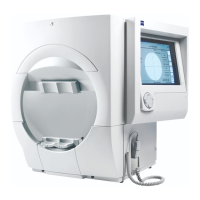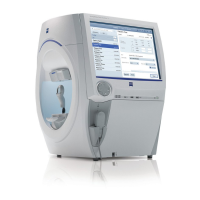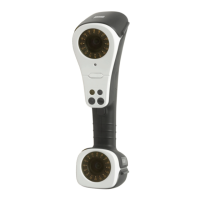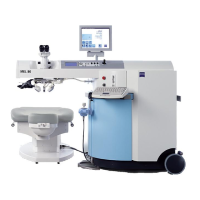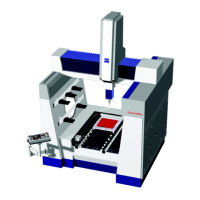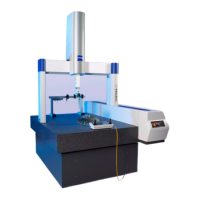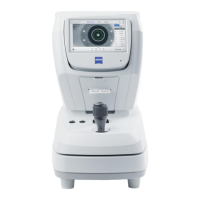Setting-Up Tests
Humphrey Field Analyzer II-
i
series User Manual 2660021145640 A
3-20
Using Trial Lenses
All patients requiring near vision correction should use trial lenses while taking central field tests
and the central portion of full field tests. For your convenience, the HFA II-
i
automatically calculates
the proper trial lens for your patient, if you know the patient’s distance prescription and date of
birth (refer to “Entering Patient Data,” on page 3-7).
If you are not using the automatic trial lens calc
ulation, refer to the following guidelines for
selecting trial lenses.
Guidelines For Trial Lens Selection:
1. Ignore cylinders of 0.25 D or less.
2. For cylinder errors below 1.25 D use the spher
ical equivalent. Use the full cylinder correction
for cylinder errors of 1.25 D or more.
3. Refer to Table 3.5 for hyperopic or emmetropic pa
tients, or Table 3.6 for myopic patients, to
determine the power of the spherical trial lens that you need to use.
4. Verify that the patient can see the fixation light clearly through the trial lens before beginning
testing. Y
oung myopes may need additional minus power if the target appears blurry to them,
prior to beginning testing. Many 30-40 year olds may not need the full trial lens correction.
How to Calculate the Spherical Equivalent
The spherical equivalent is equal to half of the power
of the cylinder (DC) correction. For example,
the spherical equivalent of +1.00 DC is +0.50 D. The spherical equivalent of -0.50 DC is -0.25 D.
You add the spherical equivalent of the cylinder power to the original spherical power to get the
overall spherical equivalent. Refer to the “Examples of Trial Lens Correction,” on page 3-21 for
additional examples.
Table 3.5 Spherical Trial Lens Correction for Central Visual Field Testing of
Hyperopic and Emmetropic Patients
Hyperopic Distance R
x
is
Greater than Zero
Emmetropic Distance R
x
is
Zero (Plano)
Age
Under 30 Distance R
x
only No correction
30 - 39 (Dist. R
x
) + (1.00 D) = trial lens +1.00 D trial lens
40 - 44 (Dist. R
x
) + (1.50 D) = trial lens +1.50 D trial lens
45 - 49 (Dist. R
x
) + (2.00 D) = trial lens +2.00 D trial lens
50 - 54 (Dist. R
x
) + (2.50 D) = trial lens +2.50 D trial lens
55 - 59 (Dist. R
x
) + (3.00 D) = trial lens +3.00 D trial lens
60 & Over (Dist. R
x
) + (3.25 D) = trial lens +3.25 D trial lens
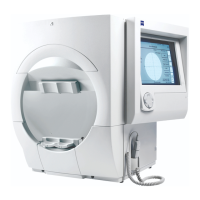
